How to Grow Haze Strain
Ready to elevate your cannabis cultivation game? If you’re intrigued by the hypnotic flavors and cerebral high of the Haze strain, this comprehensive guide is your ticket to raising this queen of sativas like a pro. From seed to harvest, let’s dig deep!
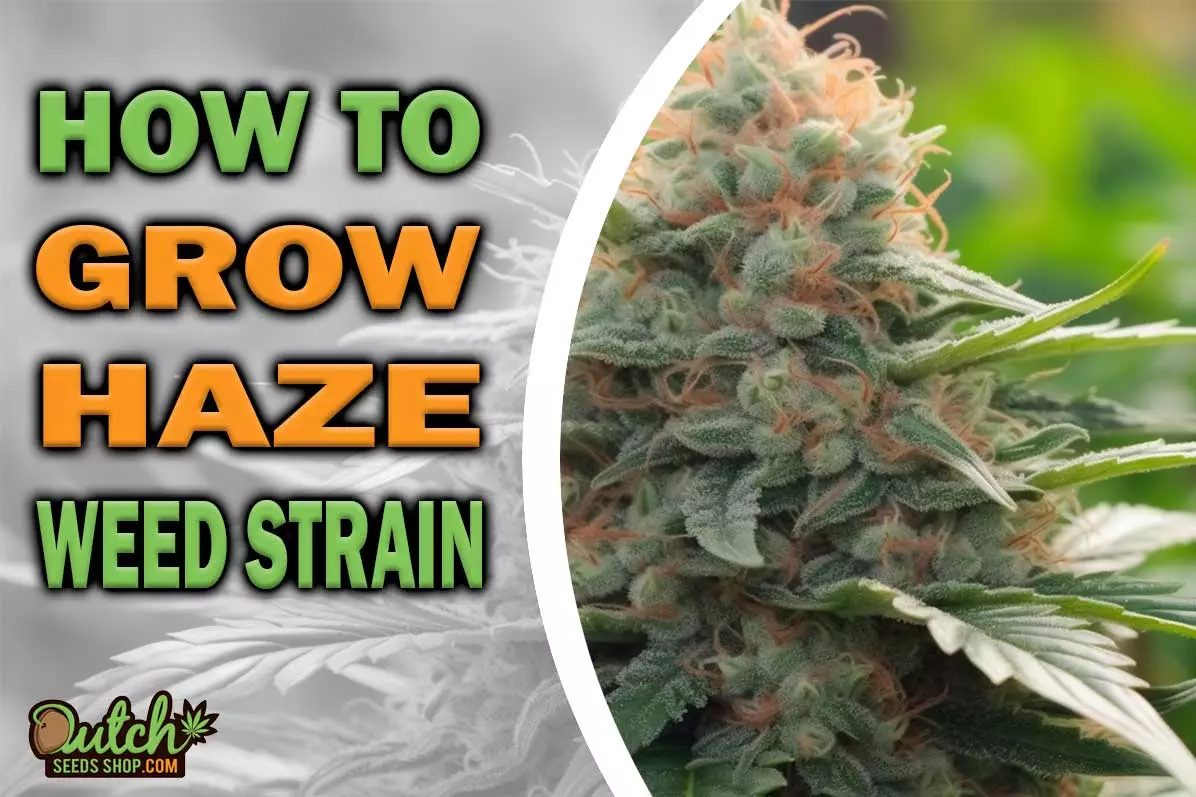
Get To Know Haze Strain
This strain is a fusion of worlds – South American Sativa, Thai Sativa, Mexican Sativa, and South Indian Sativa as parents.
Sporting a THC level between 17% to 23% and minimal CBD under 0.5%, Haze has a reputation for inducing joy and energy.
Originating in the ’60s, this strain has snagged various awards, making it a staple in cannabis culture.
It has an aroma that’s a complex blend of citrus, earthy, orange, and sweet scents, with effects that keep you happy, energetic, and uplifted.
Tips and Tricks for Growing Haze Successfully
From seedlings to flowering start, growing Haze seeds can be a rollercoaster ride.
The strain has a high growth difficulty, requiring attention to detail at every stage.
Given its 63 to 70 days flowering time, you’ll want to plan your calendar carefully.
Whether opting for seeds or clones, make sure they’re of top-notch quality.🌿
Quick Tips:
- Pick high-quality seeds or clones.
- Invest in essential accessories and cultivation tools.
- Stay vigilant during the growth stages.
- Monitor humidity and temperature diligently.
- Learn common pests and diseases, and have a mitigation plan.
Haze Indoor Growing
Ah, the legendary Haze strain! Known for its spicy scent, uplifting effects, and cerebral high, growing Haze indoors isn’t just a project – it’s an art form.
But how exactly does one go about it?
Benefits of Indoor Growing
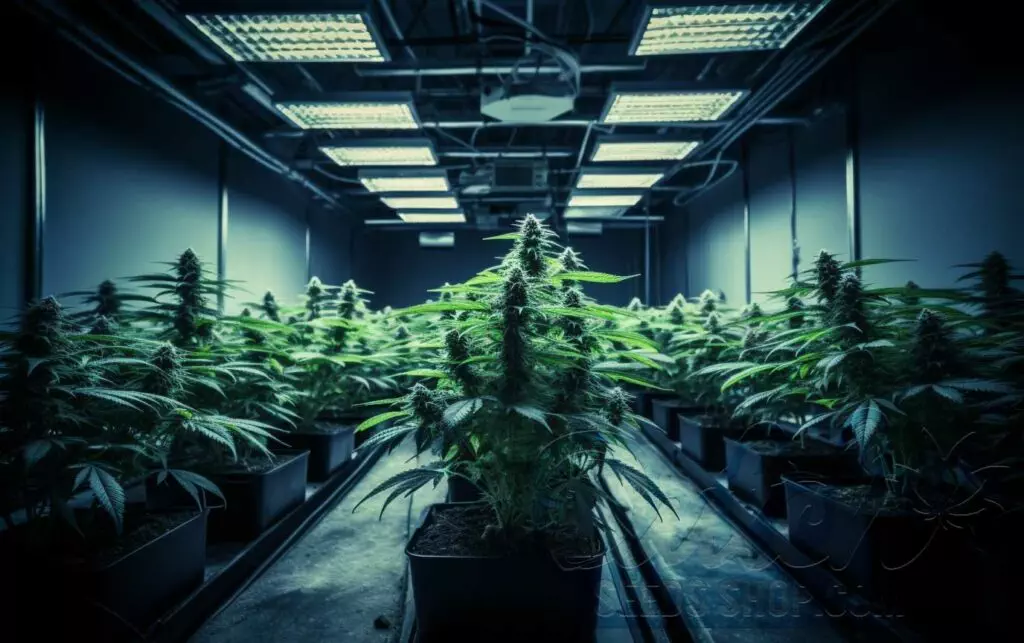
Growing Haze indoors provides a level of control that’s practically non-existent in outdoor setups.
You’re the maestro, conducting temperature, light, and humidity in a controlled environment.
This setup drastically reduces the risks of pests, diseases, and unpredictable weather ruining your hard work.
| Factor | Indoor Advantage |
| Pest Control | Reduced exposure to outdoor pests |
| Climate | Year-round growing conditions |
| Privacy | Keeps your gardening discreet |
| Harvest Cycles | Multiple harvests within a single year |
Setting Up Your Indoor Grow Space
Your space sets the stage for the cannabis opera that’s about to unfold.
We’re talking about a dedicated room or tent, decked out with reflective walls to maximize light exposure.
Don’t underestimate the power of good ventilation; it’s vital for plant health and odor control.
- Reflective Walls: Boosts light efficiency
- Ventilation: Essential for humidity and temperature
- Light Fixtures: Supports plant growth phases
- Climate Control: Keeps the environment stable
Climate Control
Getting the climate right is crucial in indoor growing.
It’s not just about setting up an air conditioner and calling it a day; you’ve got to think about the intricate dance between humidity, temperature, and airflow.
Suboptimal conditions can lead to slowed growth, or worse, mold and mildew.
Ventilation systems and humidifiers can help maintain optimal conditions, ensuring that your Haze plants thrive.
Types of Lights
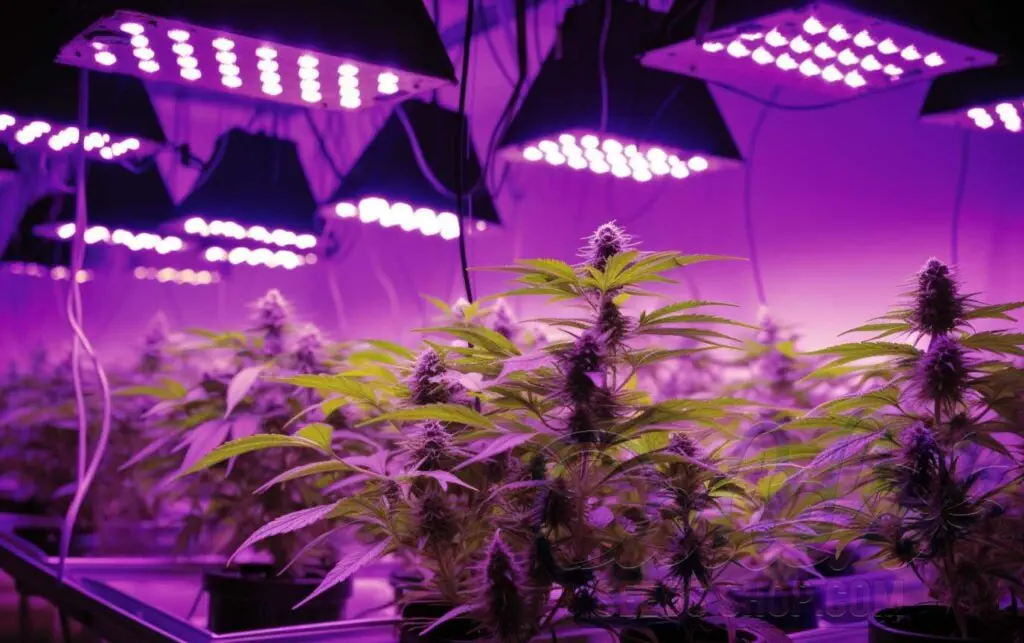
When it comes to indoor cultivation, light is your plants’ best friend and a complicated one at that.
LED lights are energy-efficient and offer full spectrum light, but can be costly upfront.
HID lights are powerful and budget-friendly but run hot, necessitating additional cooling measures.
| Light Type | Pros | Cons |
| LED | Energy-efficient | Costly upfront |
| HID | Powerful and affordable | Runs hot |
Growing Mediums and Containers
Choosing the right medium is like picking the perfect stage for your cannabis show.
While soil is the most straightforward and organic option, hydroponic systems offer a soil-less route for more precise nutrient control.
If you go the soil route, fabric pots can help with better aeration.
In hydroponics, deep water culture systems are a game-changer, allowing for dynamic nutrient uptake and quicker growth cycles.
Caring for Indoor-Grown Haze
Feeding, watering, and pest management, oh my! Make sure you’re not overfeeding, as Haze prefers a lighter nutrient mix.
Monitor pH levels and keep an eye out for the early signs of nutrient imbalances, such as yellowing leaves.
- Feeding: Light nutrient mix
- Watering: Adjust according to the growing medium
- Pest Management: Neem oil as a preventative measure
Odor Control
You love that distinctive Haze aroma, but your neighbors might not be fans.
Indoor grows can pack a powerful olfactory punch.
Carbon filters are your go-to for scrubbing those scents right out of the air.
Combined with a reliable exhaust system, you can maintain an odor-free grow space while letting your Haze plants flourish.
Haze Outdoor Growing
Going au naturel with your Haze? Outdoor growing taps into the raw power of Mother Earth herself, harnessing natural sunlight and soil to produce flavorful, aromatic buds.
But it’s not all sunshine and rainbows; let’s dig into the deets!
Benefits of Outdoor Growing
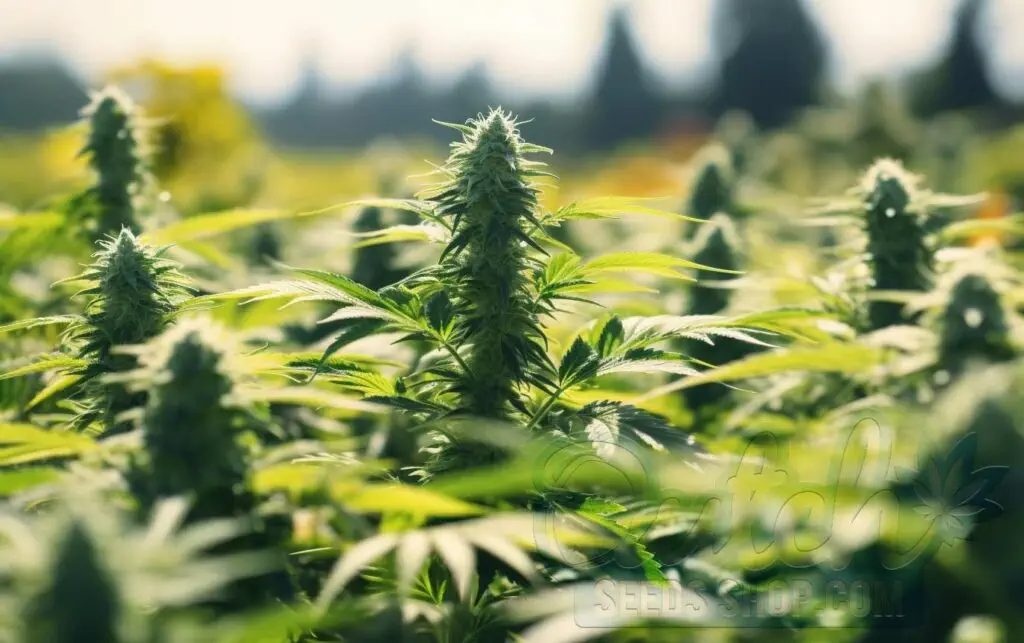
Haze takes on a whole new character when you grow it under the sun.
You’ve got more space, which translates to bigger yields.
Plus, there’s something so genuine about a sun-kissed bud! The cost of entry is lower – no need to invest in lights, fans, or complicated systems.
| Factor | Outdoor Advantage |
| Space | Room for larger plants and higher yields |
| Sunlight | Full spectrum, natural light |
| Costs | Lower startup costs |
Best Time to Plant Haze Outdoors
Let’s talk timing because Haze has a lengthy flowering cycle.
Ideally, you’re planting in late spring to early summer when the risk of frost is behind you.
The aim is to give your plant as much vegetative growth time as possible before the daylight hours start waning.
- Late Spring: Post-frost
- Early Summer: Optimal vegetative phase
- Avoid Fall: Reduced daylight triggers flowering
Setting Up Outdoor Grow Spaces
Just like how you’d pick a prime spot for a picnic, your Haze deserves the best outdoor real estate.
Think sunlight, but not too much direct heat.
Shield your plants from strong winds by using natural barriers like hedges or fences.
If you’re growing in a pot, ensure mobility to dodge bad weather.
- Sunlight Access: At least 8-10 hours daily
- Wind Protection: Use barriers
- Mobility: Opt for moveable pots if possible
Selecting and Preparing Soil
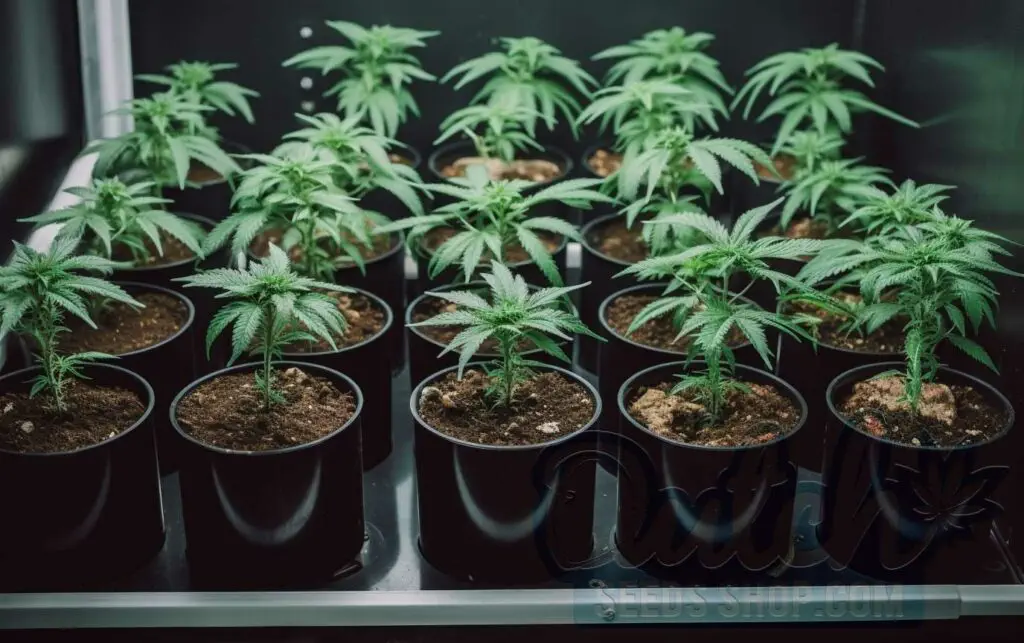
The soil you choose is more than just dirt; it’s the foundation of your grow.
Organic, well-draining soil rich in nutrients is your best bet.
Perlite or vermiculite can improve drainage.
pH levels should be between 6 and 7.
Soil testing is a critical step.
It helps you understand nutrient levels and any pH adjustments that may be needed.
Adding organic matter like compost can also help with water retention and nutrients.
Nutrients and Fertilizers
Just like humans, your Haze plants have dietary needs.
During the vegetative stage, they crave nitrogen.
As they enter flowering, phosphorus and potassium take the lead role.
Overfertilization can lead to nutrient lockout, so less can often be more.
| Growth Stage | Key Nutrient | Risk |
| Vegetative | Nitrogen | Overfertilization |
| Flowering | Phosphorus, Potassium | Nutrient lockout |
How to Maximize Haze Yield
Now, who doesn’t want big, bountiful buds? From strain selection to late-stage care, every decision matters.
Training techniques like Low Stress Training (LST) or Screen of Green (ScrOG) can improve light distribution and therefore yield.
Also, be cautious with harvesting.
Waiting for the perfect window when trichomes are milky white can make a world of difference in potency.
- Strain Selection: Opt for high-yield seeds
- Training Techniques: LST, ScrOG
- Harvest Timing: Watch those trichomes
Diving into the world of growing Haze is like going on a botanical rollercoaster.
It’s a ride filled with ups, downs, and a whole lot of TLC.
From choosing the right growing medium to mastering climate control, every move counts.
And why go through all this hassle? Because Haze offers you a flavor profile and cerebral high that are second to none.
Mastering this strain opens doors to potent, aromatic buds that have a richness you won’t find easily elsewhere.
Whether you’re in it for the passion or the profits, getting your hands green with Haze is worth every drop of sweat and love you pour into it.
FAQ
Curious minds wanna know! Here are some questions about growing Haze that you might be asking. Sit tight; answers are coming your way!
Can Haze Plants Be Grown in Hydroponic Systems?
Absolutely, Haze loves hydro. The nutrient absorption is faster, which can lead to lush growth. Just be mindful of pH levels and potential algae build-up.
How Long Is the Flowering Period for Haze?
Hold your horses! Haze has a lengthy flowering time – often 10 to 12 weeks. Patience pays off in rich flavors and potent effects.
Does Haze Require A Lot of Pruning?
Not really, but a little snip-snip never hurts. Removing some lower branches can help with airflow and allow the plant to focus on producing big, fat buds.
Are Haze Strains Susceptible to Pests?
Less so than other strains, but don’t let your guard down. Regular checks and organic pesticides can keep those little critters at bay.
How Much Yield Can I Expect from One Haze Plant?
Yields vary, but if you’ve nailed the care regimen, one plant can produce upwards of 500 grams. Boom!
About the Author
Share the Love:
